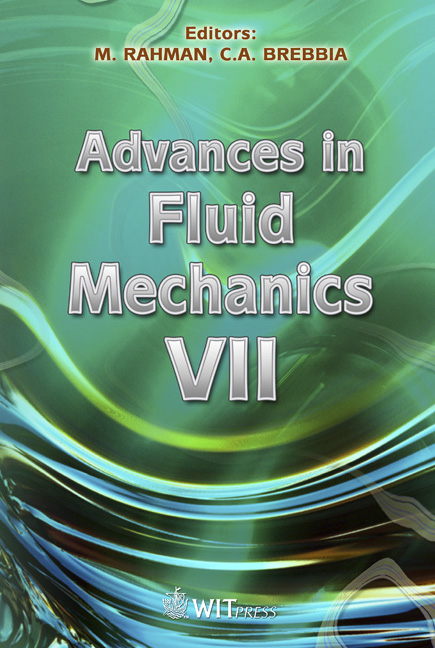Modelling The Hot Rolling Process Using A Finite Volume Approach
Price
Free (open access)
Transaction
Volume
59
Pages
10
Published
2008
Size
490 kb
Paper DOI
10.2495/AFM080411
Copyright
WIT Press
Author(s)
J. A. de Castro & L. P. Moreira
Abstract
Modelling the hot rolling process using a finite volume approach J. A. de Castro & L. P. Moreira Metallurgical Engineering Post Graduate Program, Federal Fluminense University, UFF, Brazil Abstract A finite volume model for the hot rolling process is proposed to determine useful parameters in the hot rolling such as the loads, temperature, stress and strain fields and the microstructure. A non-Newtonian formulation and a Eulerian description are adopted with the finite volume method. The strain-rate field is firstly obtained from the pressure and velocities solutions. Then, the temperature field together with a constitutive equation provides the apparent viscosity of the material and thus the stress field. The adopted constitutive equations describe the microstructural phenomena occurring in the hot rolling, i.e., work-hardening, recovery and recrystallisation. The predictions obtained with the proposed finite volume model are in good agreement with the industrial measured rolling loads and surface temperatures for the 7-stand finishing mill of a C-Mn steel strip. Keywords: transport equations, finite volume method, hot rolling. 1 Introduction The mathematical modelling of the hot rolling process is an extremely hard task because of the deformation coupled to the temperature, the microstructure phenomena as well as the range of temperatures, strains and strain-rates which, in turn, cannot be well reproduced or even monitored under laboratory conditions. The mathematical models for describing the hot rolling process in the literature can vary from roll force and torque models based upon the works of Orowan [1] and Sims [2] up to integrated and stand alone Finite Element (FE) models, e.g., Zhou [3] and Mukhopadhyay et al. [4]. In bulk metal forming processes such as the hot slab or strip rolling, the elastic strains are usually very small in comparison to the high plastic strain levels and then can be neglected.
Keywords
transport equations, finite volume method, hot rolling.





